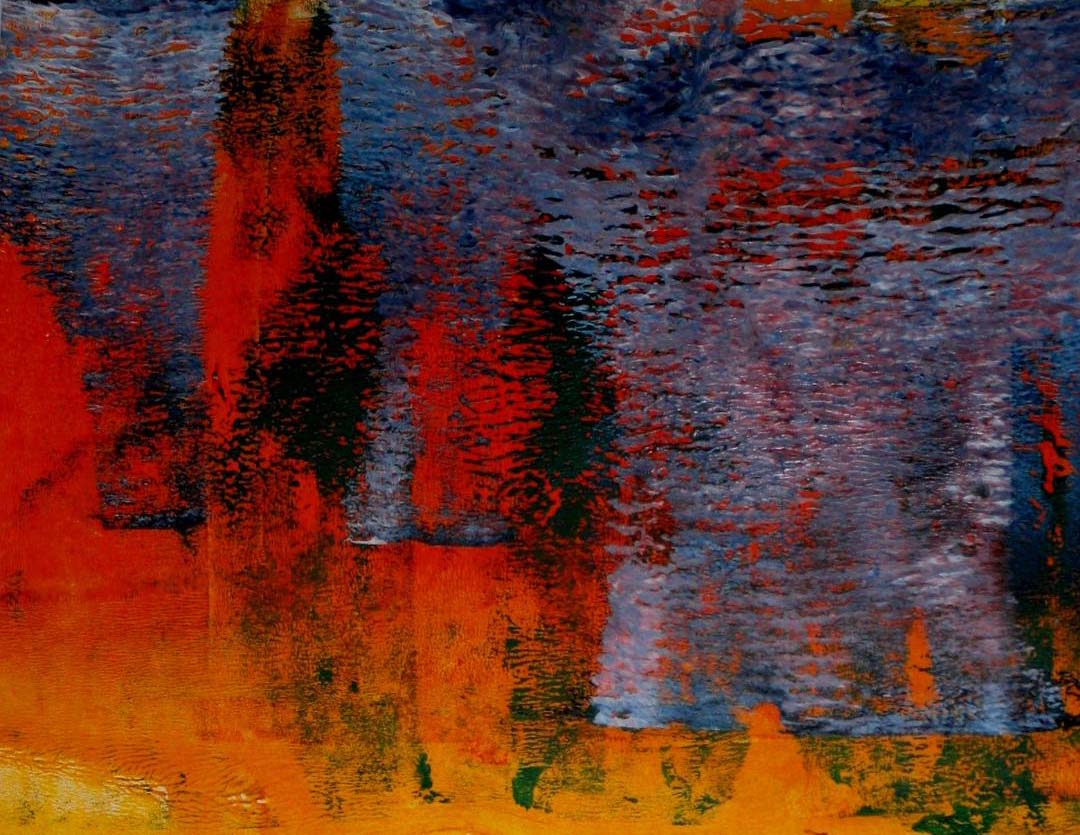
The Wayfarer’s Legacy
Share
Image: Untitled monoprint by Nigel Pennick © 2020
Through an empty land of abandoned field enclosures and plots where cottages once stood, overgrown with wild flowers and trees, inhabited only by birds and feral animals, a spiritual traveller was passing. Amid the abundant wasteland, the wayfarer was confronted suddenly by an ostentum of an eldritch beast that seemed to beckon towards a certain spot illuminated by a magic light. This manifestation of the numinous was so striking that the wayfarer felt compelled to mark and honour the place lest the spirit depart never to return.
Now and again such events occurred during the age of the Wasting of the Land of Logres, when the Island of Britain was devastated and depopulated after the fall of the Roman Empire. Occasionally, a sacred building would be constructed on the place where a wayfarer had experienced the ostentum, a building that had everything to do with “here.” The numen was enshrined and honoured according to its peculiar local virtues and attributes. But not before long, an ideology from another landscape in a distant land was imported and on-laid over the particular unique numinosity of the place. Gradually, this numinosity was driven down by repeated imported rituals which had totally different intentions. The local was overridden by a monocultural claim of universality that nevertheless retained the unmistakeable stamp of its outlandish origin.
Centralized orders from theocratic authorities in far-off lands drove down local numinosities in order that a standardized doctrine be enforced. Doctrine, being subject to hierarchical power-struggles, is mutable. Schisms and reformations imposed from afar worked to further this alienating process until nothing remained of the eldritch numinosity experienced by the ancient wayfarer that had caused the original shrine to be brought into being. The place became gast, spiritually dead, for finally the indwelling spirit had been driven away. War, revolution, invasion, and pestilence finally destroyed what remained. The land was depopulated once more. The ruins stood abandoned, overgrown with trees, inhabited by birds and new kinds of wild animals, for the original ones had long since been exterminated.
Nigel Pennick, Old England House, May 25, 2020
